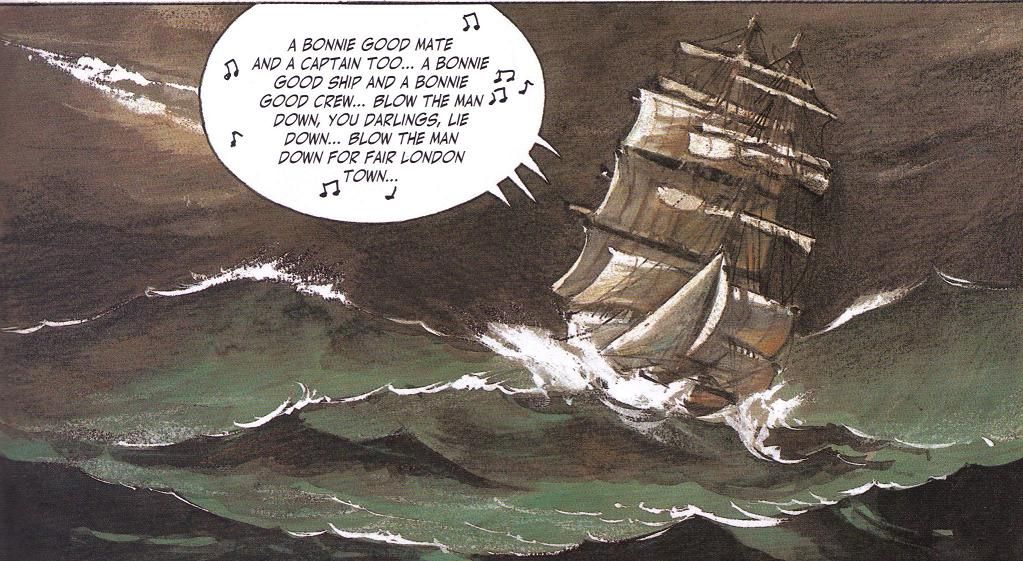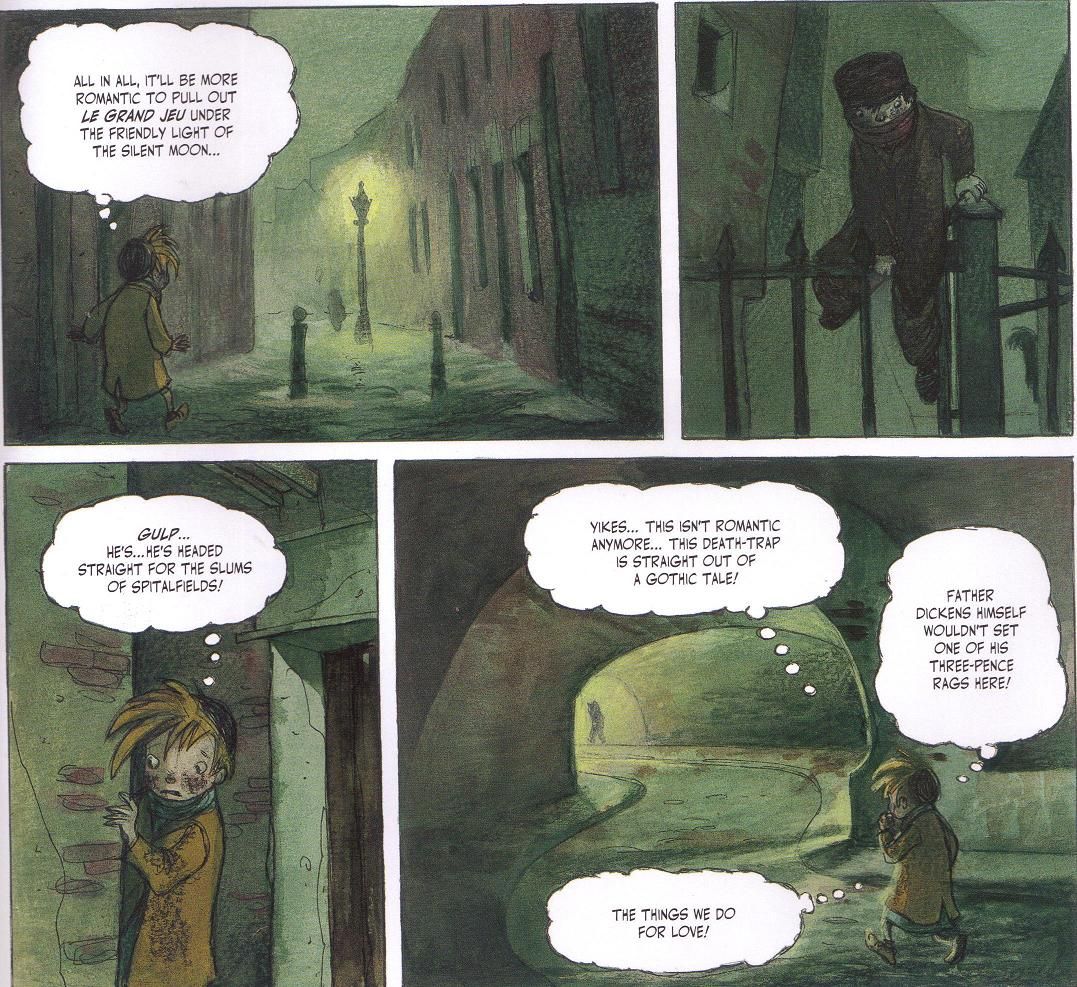"One evening as I was lying down by Leicester Square / I was picked up by the coppers and kicked in the balls / Between the metal doors at Vine Street I was beaten and mauled"
Humanoids often has interesting comics, so when they offered Basil & Victoria, a nice hardcover collecting stories about two street urchins in late-Victorian England, I figured I had to give it a look. It's written by "legendary bande dessinée writer" Yann (hey, that's what it says on the back of the book!) and illustrated by Edith (that would be Édith Grattery).
There are five stories in this volume (which is all that exist, by the way), and they were originally published in 1990, 1992, 1995, 2006, and 2007. This book was translated by Anna Provitola and costs $39.95.
Basil and Victoria live in London, and their adventures take place in the late 1880s, which means they cross paths briefly with John Watson (but not quite Sherlock Holmes) and Jack the Ripper. Each of the stories is essentially self-contained, although there are some plot threads that meander through the albums, most notably the fate of the Hindu girl from the first story. Yann puts his two main characters into situations that require them to use all the skills they've picked up on the streets to extricate themselves from, and they're fairly entertaining. In the first story, they're hired to track down a missing Indian girl whom Basil calls Sâti, not understanding that that's not actually her name. It turns out that she's trying to escape her family, who wants to immolate her along with her dead husband. They help her escape, and she joins the ranks of the homeless kids who scurry all over London. In the second story, the two kids are caught up in the Ripper case, as they know many of the prostitutes who are being killed. In the third album, Basil tries to get to India to be with Sâti, who somehow managed to make her way back there. The kids end up in Zanzibar, however, and things don't go very well. Back in Britian, they float to an island in Scotland, where they go looking for buried treasure.
Finally, in the final story, they're back in London, where they join a bunch of chimney sweeps and have to find the ravens of the Tower of London, which have flown away. There's a lot of adventure, in other words.
Yann does a nice job with the brutal existence of London's lower classes, as well as the casual way they faced the crappy lives they led. He populates the book with a lot of colorful characters, but they all live in squalor and they're often incredibly cruel. The book is full of black humor, but also quite a lot of death and ugliness. One of the reasons I don't like the book more is because there really are no "good" characters in the book - you would think that Basil and Victoria might show some semblance of humanity every once in a while, but they're as horrid as the rest of the cast. They're friends, and they have an awkward kind of love that is actually quite well done, because neither of them know how to express it. But whenever they show any bit of humanity, they immediately shut it down, and while that might be an interesting comment on the horror of the poor in Victorian England, it's also a bit hard to take. Yann doesn't limit himself to this behavior in the lower class, either - the daughters of the lord of Zanzibar are evil creatures, making sure their adoptive sister is walled up in a new palace (before Basil saves her). While the way Yann writes the characters is probably quite close to how people during that era actually lived, it's still rather unpleasant spending so much time with them, because they're so nasty. But as a critique of the social problems during this time, it's fairly clever.
The art is tremendous and helps Yann make his points quite well. Edith has a nice, cartoony style that often belies the brutal subject matter she's drawing, which helps make it a bit more palatable.
She draws grime and grit and manacled slaves and dogs fighting rats and murdered prostitutes (in silhouette, but still), so we're never unaware of the awful lives these characters live, but she also to show how naïve the kids - and many adults - are about the way the world works. This is why Yann's story works as well as it does - Edith draws Basil, Victoria, and the rest of the kids as wide-eyed innocents one moment and ugly monsters the other, and their emotional roller coasters are rawer because of it. One strange result of her style is that the kids look much younger than they are - Victoria points out that a peer of hers has already given birth, which would mean she hit puberty already, and it's obvious that the kids are either sexually active or desperately want to be, but Edith's style makes them look younger, which makes those moments more uncomfortable. Still, she does a marvelous job with the work, whether the kids are in crowded London, equatorial Zanzibar, or windy Scotland. Her coloring on the book is amazing. She uses a lot of charcoal to scuff the page, and the paints are beautiful. Some of her panels help create this tragic dichotomy - the world is so beautiful, but the kids' lives are so squalid that they'll never get to enjoy it. It's really a gorgeous book, and the art helps make the story better.
As usual with comics that were originally in another language, I always wonder if something has been lost in translation, but that's just the way it is. I do like the book, but I can't get too far past the fact that it's so steeped in nihilism. I don't mind bleak comics, but for some reason, I just didn't like the way Basil and Victoria treated each other and other people. Oh well. Other than that, this is a pretty good comic. If you like the cruelty of the characters, you might like it a lot more than I did!
Rating: ★ ★ ★ ★ ★ ★ ☆ ☆ ☆ ☆





